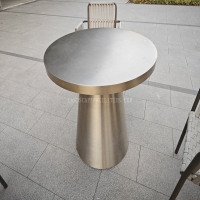Welcome to the website for landscape facilities products and knowledge.
What are the most important factors in determining the table’s resistance to fading?
What makes some tables maintain their vibrant appearance for decades while others fade prematurely? The answer lies in understanding several crucial factors that determine a table's resistance to fading.
The primary enemy of table surfaces is ultraviolet (UV) radiation from sunlight. Tables placed near windows or in sun-drenched rooms face constant UV assault that breaks down color molecules in wood, paint, and finishes. The intensity and duration of sun exposure directly correlates with fading speed, making positioning a critical consideration.
Material composition plays an equally important role. Solid hardwoods like teak, mahogany, and oak naturally contain oils and dense grain structures that resist fading better than softwoods. For manufactured tables, the quality of veneers, laminates, and synthetic materials determines their photostability—the inherent ability to withstand light-induced color changes.
The type and quality of protective finishes significantly impact fade resistance. Modern UV-resistant polyurethane and conversion varnish coatings provide superior protection compared to traditional shellac or lacquer finishes. These advanced formulations contain UV absorbers and stabilizers that act as a sunscreen for your table, filtering harmful rays before they penetrate the surface.
Environmental factors beyond direct sunlight also contribute to fading. Humidity fluctuations, temperature changes, and artificial lighting—particularly halogen and fluorescent bulbs—can accelerate color degradation. Tables in consistently climate-controlled environments generally maintain their color longer than those subjected to variable conditions.
Maintenance practices complete the fade-resistance equation. Regular cleaning with appropriate products preserves protective coatings, while harsh chemicals can strip away UV protection. Using window films, curtains, or tablecloths during peak sunlight hours provides additional defense against the most damaging rays.
Ultimately, a table's resistance to fading represents a combination of inherent material properties, quality of protective finishes, environmental exposure, and consistent care. Understanding these factors empowers you to select tables built to last and implement practices that preserve their aesthetic appeal for generations.
Related search:

Recommendation
Outdoor Metal Table - Classic Outdoor Furniture, Stainless Steel Table, Durable and Reliable